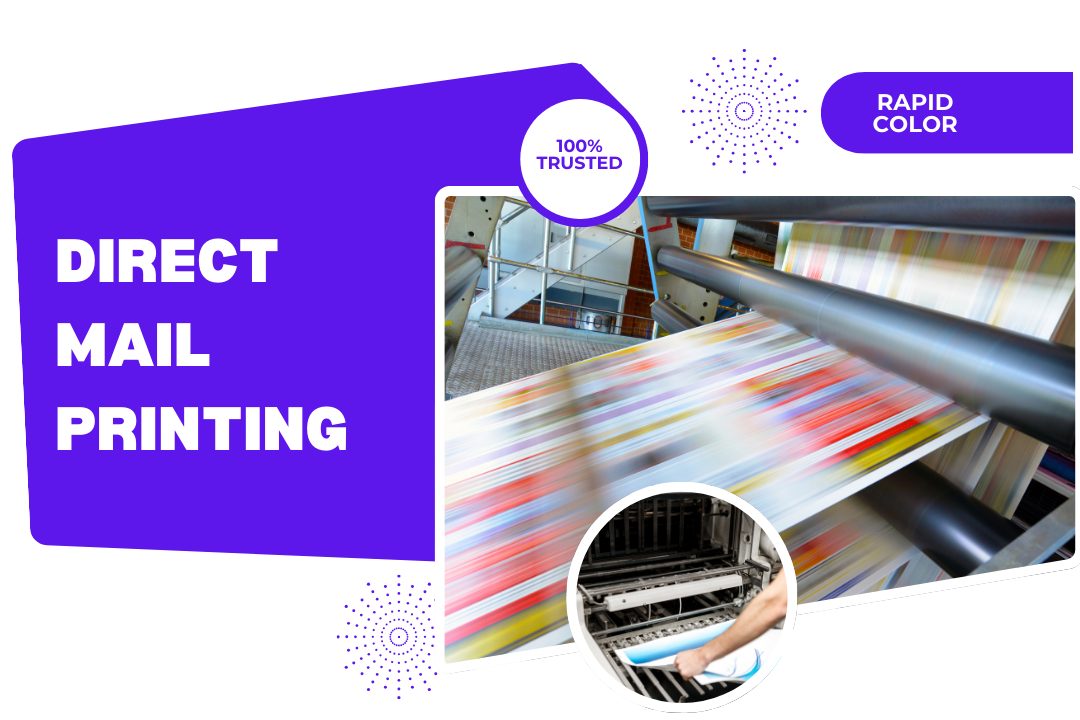As the world becomes more digital, Direct Mail Printing evolves, and it turns out to be a valuable and efficient part of marketing campaigns. As we step into 2025, technological innovation and evolving consumer behaviours are impacting the manner in which businesses leverage direct mail to reach their target base. In this article, the most prominent trends affecting Direct Mail Printing in 2025 are discussed, and how businesses can remain competitive by embracing them.
Personalized and Data-Driven Campaigns
The Shift Towards Hyper-Personalization
Those generic mailer days are behind us. Direct Mail Printing in 2025 is all about data-driven, analytics-powered personalization. Today’s marketers use customer data to customize messages, promotions, and images based on individual behaviour and buying habits.
How Data Amplifies Influence
By combining printing services and CRM, companies can produce targeted mailers that are personal and relevant. Whether a localized message or a custom discount code, direct mail that is personalized generates engagement and ROI.
Integration with Digital Channels
Omnichannel Marketing Synchronization
Among the strongest Direct Mail Printing trends is convergence with digital media. QR codes, personalized URLs (PURLs), and NFC technology are increasingly being incorporated into print to connect offline communications with online experiences.
Connecting the Physical and the Digital
With the use of mailers that bridge to landing pages, video, or social media, companies have the ability to track engagement as well as measure effectiveness. This consolidation creates a more complete customer experience.
Sustainable Printing Practices
Green Materials and Inks
As the environment remains a concern, Direct Mail Printing is going green. Recycled paper, biodegradable packaging, and soy ink are the new standard.
Waste Minimization through Intelligent Targeting
Rather than brochure printing in large quantities for large groups, companies are employing data to make fewer, more-focused ones. This reduces waste while optimizing impact.
More Attractive Images and Innovative Design
Good-quality finishes and texture
Tactile and visual features are becoming the standard in rendering mailers memorable. Greater use of soft-touch coating, spot UV, embossing, and foil stamping in Direct Mail Printing to create a high-end finish is expected.
New Structures and Formats
New sizes such as folded self-mailers, die-cut items, and pop-up mailers are popular. Such sizes generate interest and prompt the recipient to interact with the information.
Automation of Mailing and Printing
Rationalizing Manufacture
Automation software is transforming Direct Mail Printing, with quicker turnaround and uniform quality. From print-on-demand equipment to automated mailing, companies can now produce big-ticket campaigns with minimal or no human intervention.
Variable Data Printing (VDP)
VDP technology makes it possible to personalize a single article without slowing down production. It makes personalization possible without sacrificing operations.
Real-Time Tracking and Analytics
Quantifying Campaign Effectiveness
Advanced analytics have become the center of Direct Mail Printing campaigns. Companies are able to monitor delivery, response, and conversion in real-time through barcode scans, QR codes, and customized URLs.
Data-Driven Adjustments
Real-time feedback allows for instant campaign shifts, making direct mail nimble and reactive to an unprecedented level.
Cost-Effectiveness through Bulk Printing and Targeting
Smart Budgeting
Although Direct Mail Printing is costly, improved targeting and automation allow companies to economize on waste and maximize return on investment. Bulk printing capacity and more efficient audience segmentation help reduce costs.
Maximizing ROI
By focusing on quality rather than quantity, companies receive more for less, and direct mail is an option for small and medium-sized companies.
Conclusion
Direct Mail Printing is not only surviving but prospering in the digital age by embracing personalization, sustainability, and innovation. Businesses that are on board with these 2025 trends will enjoy a serious competitive edge. Whether through smart targeting, strong design, or built-in tech, direct mail remains a powerful tool for capturing attention and driving results.
The addition of color printing to these mailers adds even greater appeal, without sacrificing creative expression and brand awareness. As businesses plan their 2025 marketing strategy, embracing modern Direct Mail Printing best practices will be the key to connecting with their target audiences and competing in a saturated marketplace. Don’t discount the strength of strategic Direct Mail Printing—particularly when coupled with successful color printing solutions that drive and convert.
FAQs
What is the strongest trend in Direct Mail Printing in 2025?
Personalization is the biggest trend. Businesses employ customer data to create personalized content to gain more engagement and campaign performance.
Where does Direct Mail Printing belong in digital marketing?
Modern mailers use QR codes, customized URLs, and NFC chips to direct mail printing recipients to web-based data, providing a seamless marketing experience.
Is Direct Mail Printing eco-friendly?
Yes, generally speaking, all companies nowadays use recycled materials and eco-friendly inks, and they reduce waste by aiming more precisely and producing more responsibly.
How do Direct Mail campaigns quantify the success of companies?
Real-time analytics software enables companies to monitor delivery and response rates through scannable codes, making the return on investment quantifiable and campaigns more effective.


